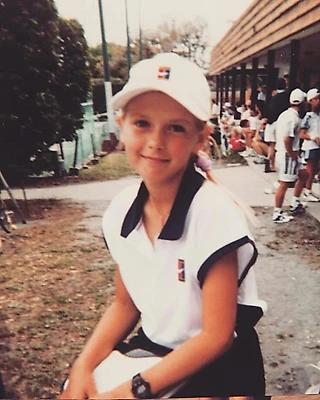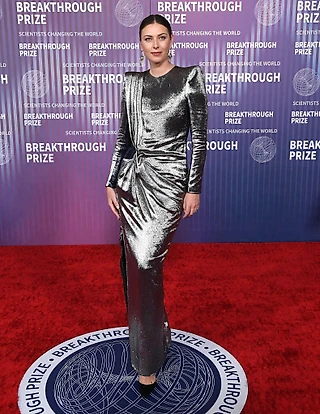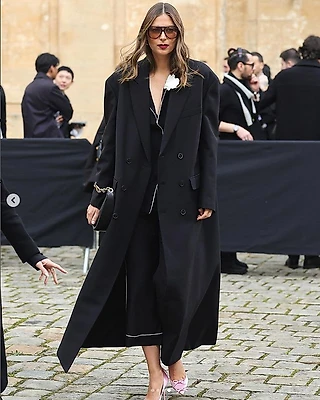Recap & Timeline: WADA IP Report Part Two
Andy Brown @journoAndy
Part Two of the Independent Person (IP) Report will be unveiled today at the St. Pancras Renaissance Hotel at a specially-convened press conference, running from 10am until 12:15pm. Professor Richard McLaren, who is compiling the final instalment of the report for the World Anti-Doping Agency (WADA), has said that it will allow him to ‘fulfill the third element of our mandate, namely “to identify any further athletes that might have benefited from such manipulation to conceal positive doping tests”’.
McLaren’s mandate, as outlined in this document, was to establish whether:
• There has been manipulation of the doping control process during the Sochi Games, including but not limited to, act of tampering with the samples within the Sochi Laboratory.
• To identify the modus operandi and those involved in such manipulation.
• To identify any athlete that might have benefited from those alleged manipulations to conceal positive doping test.
• To identify if potentially this Modus Operandi was also happening within the Moscow Laboratory outside the period of the Sochi Games.
• There is any other evidence or information held by Grigory Rodchenkov.
WADAprofiles_GRodchenkovPart One of the IP Report was published on 16 July, in response to allegations by Dr. Grigory Rodchenkov that the laboratory at the Sochi 2014 Winter Olympics was corrupt. Rodchenkov’s allegations stemmed from an article in the New York Times, in which he outlined a methodology of switching ‘tainted’ samples of Russian medal winners for ‘clean’ urine through a shadow laboratory – Room 124. It dealt with the first two bullet points of his mandate, outlined above. McLaren had 57 days to complete Part One of the WADA IP Peport. He said he received “important information” on 15 July which he had not had time to include.
Athlete identification
Screen Shot 2016-07-18 at 16.30.51
Russia did not report any adverse analytical findings (AAF) at the Sochi 2014 Olympics, where it took a record number of gold medals. If Part Two of the IP Report is to name names, then McLaren could be publishing a very long list. The first part of the IP Report found that during the 2012-2015 period, the ‘disappearing positive’ methodology he outlined was used on 643 samples. However, he added that this was likely to be the minimum number, as access to Russian records was limited.
Screen Shot 2016-07-18 at 16.41.35
It could also include the names of foreign athletes who were ‘saved’ under the ‘disappearing positive’ methodology, whereby Russia’s Deputy Minister of Sport, Yuri Nagornykh, decided which positive tests would disappear. At least eight foreign athletes were ‘saved’ – i.e. they reported a positive adverse analytical finding (AAF) which was incorrectly filed as a ‘negative’ in WADA’s Anti-Doping Administration and Management System (ADAMS).
Modus Operandi outside of Sochi
As previously mentioned, Part One of the IP Report found that the ‘disappearing positive’ methodology had also been used on 643 samples from 2012 to 2015. This appears to indicate that the modus operandi outlined in Part One of the Report was being used outside of the Sochi 2014 Olympics. Since then, a report compiled by UK Anti-Doping (UKAD) for WADA on issues it faced with collecting doping samples in Russia, which revealed that all samples collected in Russia must still pass through Moscow, appears to indicate that State control of samples taken in Russia is still in operation.
In examining whether the modus operandi outlined in Part One of the WADA IP Report extended beyond Russia, McLaren may consider claims made by Professor Verner Møller of Aarhus University in ‘Geheimsache Doping: Showdown for Russia’, an ARD documentary released in June. Møller had been in contact with Nikita Kamaev, a former Director of the Russian Anti-Doping Agency (RUSADA) about a book he planned to write exposing doping in sport.
“He has a lot of information and evidence to back up this information”, said Møller in the documentary. “He had evidence of secret laboratories that worked for athletes to dope. That was not only in Russia. He had evidence that happened in other countries as well.”
“Kamaev wanted to write a book about not only doping in Russia, but about doping all over the world”, Møller told The Sports Integrity Initiative. “He had evidence that there was a secret doping laboratory outside of Russia. That is something that he wanted to show me when we met, but unfortunately we did not have a chance to meet before he passed away.”
Kamaev died on Valentine’s Day this year. ‘Presumably, the cause of death was a massive heart attack’, wrote RUSADA in a statement a day later.
Any other evidence held by Rodchenkov
Part One of the WADA IP Report faced criticism for relying on the uncorroborated evidence of Rodchenkov. ‘Accusations against Russian athletes are built on the testimony of one man’, read a Kremlin statement. ‘A man with a scandalous reputation’.
Presumably, Part Two of the IP Report will examine whether Rodchenkov’s claims can be independently verified. There were a number of apparent inconsistencies in Rodchenkov’s evidence as outlined in Part One of the WADA IP Report, as The Sports Integrity Initiative previously reported. These included:
• a lack of information on how samples from ‘protected’ Russian athletes were identified and reserved for late shipment to the laboratory;
• Two different versions of how ‘protected’ Russian samples were able to be identified once they got to the laboratory, both from Dr. Rodchenkov;
• A lack of clarity over whether the A sample, the B sample or both were manipulated within the Sochi 2014 laboratory;
• Lack of explanation about how the ‘mouse hole’ to the shadow laboratory – Room 124 – operated.
Rodchenkov also gave evidence which suggested that salt had been added to clean urine to raise the specific gravity to match that of the sample, as declared on the Doping Control Form (DCF). Part One of the IP Report found that some of these samples had salt content six times higher than what could be expected in a normal human.
‘The amount of salt which would need to have been added to the clean replacement sample, simply to adjust its specific gravity upwards to match a somewhat higher SG from the test specimen, is not likely to have been very much at all’, said an independent medical expert sourced through The Sports Integrity Initiative’s contacts. ‘Indeed, in some cases, distilled water needed to be added to shift the SG in the opposite direction. This consideration argues somewhat against the “very high salt levels” coming from the implied interference.’
WADA issues and failures
Richard McLaren was appointed as an Independent Person by WADA to examine Rodchenkov’s allegations in May. To assist the Independent Person, WADA also appointed an Investigation Team led by WADA’s Investigations Manager, Mathieu Holz and including Director of the WADA-accredited laboratory in Montreal, Professor Christiane Ayotte.
McLaren, a Canadian lawyer, was also a member of the Independent Commission (IC) which in November 2015 found that the International Association of Athletics Federations (IAAF) and the Russian athletics federation (RusAF) conspired to hide doping in Russian athletics. The Independent Commission was headed by WADA’s Founding President, Dick Pound, and Günter Younger was its third and final member. Younger was later hired as WADA’s Director of Intelligence and Investigations.
McLaren’s time spent working on the IC reports appears to have affected his views on the credibility of evidence gleaned from Russian government officials. ‘I did not seek to meet with government officials and did not think it necessary having already done so with the IC with little benefit to that investigation’, wrote McLaren. ‘I also received, unsolicited, an extensive narrative with attachments from one important government representative described in this Report. In the short time of 57 days that I was given to conduct this IP investigation, it was simply not practical and I deemed such interviewing would not be helpful based on my experience with the IC.’
WADA later revealed that the IC’s two reports had cost $1.5 million, 5.4% of WADA’s $27.5 million budget for the 2015 year. It has also created a special fund of US$1 million to pay for the IP investigations. However, it does not appear to have been within the mandate of the IC or the mandate of the IP to examine WADA’s own failures to deal with the issue of systemic Russian doping. These are as follows:
• Failing to investigate why Russia reported not a single AAF from any of its athletes at the Sochi 2014 Winter Olympics.
• WADA wrote to Dr. Grigory Rodchenkov, Director of the Sochi 2014 laboratory, informing him that a ‘surprise’ inspection was due to take place (p42 of the WADA IP Report). This resulted in the destruction of 8,000 of 10,000 stored samples held at the laboratory.
• WADA failed to follow up on the Independent Observer report from the Sochi 2014 Winter Olympics, which highlighted state interference in the laboratory.
• The WADA IP Report has a number of inconsistencies that WADA has failed to explain.
As previously reported by The Sports Integrity Initiative, the IOC and WADA received substantial evidence concerning systemic Russian doping in 2013. In November 2015, we reported on how the IAAF had been investigating systemic Russian doping since April 2014 – possibly as far back as July 2013. In January, we reported how letters from the IAAF to RusAF had shown concerns about systemic doping in 2009.
A blood database obtained and analysed by Hajo Seppelt dates back to 2001 and allegedly revealed widespread doping across sport. A 2011 study published on the IAAF’s internet site, involving analysis of samples taken back in 2001, reveals that certain countries may have had an issue with doping. Yet it appears nobody investigated until Seppelt’s December 2014 documentary for ARD.
WADA has consistently claimed that it did not have the power to investigate systemic Russian doping until the 2015 World Anti-Doping Code came into force on 1 January of that year. However, Article 20.7 of the 2009 World Anti-Doping Code required WADA to ‘monitor Code compliance by signatories’ and to ‘cooperate with relevant national and international organizations and agencies, including but not limited to, facilitating inquiries and investigations’. WADA carried out investigations prior to 2015, such as the one it conducted into Lance Armstrong.
There have been at least four versions of Part One of the WADA IP Report published on the WADA internet site. The report itself shows that it was forwarded to WADA Executives on 16 July, two days before its official publication on 18 July. The latest version of the Report is here, however WADA has stopped numbering the versions in the IP address, which makes it difficult to know what revisions have taken place. WADA was forced to remove a January 2015 letter written by Rodchenkov from the end of the report, after names and contact details were clumsily erased from that letter.
Timeline (2016)
May
12 May: Dr. Grigory Rodchenkov, former Director of the Moscow anti-doping laboratory, alleges that samples were systematically manipulated at the Sochi 2014 Winter Olympics.
17 May: WADA announces that it will investigate the allegations.
19 May: WADA appoints Independent Person (IP), Richard McLaren, to investigate the allegations.
19 May: Russian general prosecutor’s office confirms investigation into doping at Beijing 2008, London 2012 and Sochi 2014 Olympics.
June
8 June: ARD documentary reveals that former RUSADA Director Nikita Kamaev had been planning a book exposing doping in sport before his death in February.
15 June: UKAD report for WADA on remaining issues with testing Russian athletes.
17 June: The Times reports that Rodchenkov and Nikita Kamaev offered Russian swimming federation officials a deal to remove swimmers from the testing pool for cash.
28 June: Russian investigators claim Rodchenkov destroyed samples deliberately to discredit the anti-doping system.
July
6 July: Russian investigators put Rodchenkov at the centre of illegal trade in substances featuring on WADA’s Prohibited List.
18 July: Part One of the WADA IP Report is published.
18 July: WADA makes recommendations based on Part One of the WADA IP Report, including for the IOC to consider a ban on Russia.
18 July: Berlinger Special AG asserts that its sample bottles are tamper proof.
19 July: IOC takes ‘provisional measures’ against Russia regarding the findings of the WADA IP Report.
22 July: Inconsistencies highlighted in Part One of the WADA IP Report.
24 July: WADA extends the mandate of Richard McLaren to complete his work investigating allegations around Sochi 2014.
29 July: WADA removes a letter written by Rodchenkov from the end of the IP Report.
August
1 August: WADA defends the timing of the release of the WADA IP Report against allegations that it has destabilised the Rio 2016 Olympics (5-21 August).
4 August: McLaren clarifies what his ‘extended mandate’ means.
4 August: International Paralympic Committee (IPC) opens proceedings against the Russian Paralympic Committee (RPC) based on the contents of the WADA IP Report.
4 August: WADA’s former Chief Investigator, Jack Robertson, alleges that WADA failed to adequately act on allegations of systemic Russian doping.
8 August: IPC suspends the RPC.
8 August: RPC announces it will appeal the IPC suspension.
September
21 September: WADA argues that it acted correctly over systemic Russian doping.
October
25 October: Yury Nagornykh, who decided which AAFs would ‘disappear’, apparently removed from the Russian Ministry of Sport.
November
3 November: Russia introduces law criminalising those who induce athletes to dope.
10 November: Russian Olympic Committee denies state doping.
20 November: ROC continues to deny state doping at WADA Foundation Board meeting in Glasgow.
23 November: WADA announces that Part Two of the WADA IP Report will be published on 9 December.
>









"Доказательства" о соли и ДиЕнЕй фактически доказывают, что не было такую систему, потому что какой нормальный человек заменит урину спортсмена А с уриной спортсмена Б, или поставить больше соли чем нормально.
При том уже доказано (не русский специалист), что нет никакой необходимости добавлять соль
Занят, есть дела в это время.
Вы подготовьтесь, потому что это будет 2-3 часа пресс-конференция, будут сказаны много плохих слов против России, будут упомянуты имена многих российских спортсменов, которые, по мнения МакЛарена употребляли допинг, но их спасла государственная система прикрытия допинга.
Ожидаю, что это будут действительно много российских спортсменов, больше 100, а может быть даже 200, и несколько зарубежных спортсмен, может быть, он назовет эти 8, о которых уже говорили, что спасли от допинг нарушения во время ОИ в Сочи.
Эта статья указывает чего ожидать и чего не ожидать.
Была информация, что МакЛарен продемонстрирует как русские открывали допинговые бутылочки, посмотрим что будет.
Вообще будьте готовы прочитать много плохого о российского спорта.
Когда вернусь, прочитаю доклад МакЛарена внимательно и начнем обсуждать его.
Конечно нам надо действовать, а не молчать.
ничего нового по сути.. как в прошлый раз
"по скольку всё это покрывало фсб, доказательств как вы понимаете нет"
Вот простая логика этого доклада.
Вы задали самый нормальный и логический вопрос. И ответ тоже нормальный - могли заходить без проблем много людей, много русских тоже, в любое время дня и ночью.
Но есть и другие нормальный и логичные вопросы. Родченков сказал, что агент открывал бутылочки в другом здании и потом носил эти бутылочки Родченкову в той комнате, рядом до хранилища, где он подготовлял окончательно бутылки с новым содержанием. Вопрос - а почему ему надо было делать это в той комнате, прятаться, опасаясь его могут увидеть и т.д., когда он мог бы сделать все это спокойно в здании где агент открывал эти бутылки?
И другой в опрос: зачем пользоваться дыркой, когда могли подготовить все в другом здании спокойно, не опасаясь ничего, потом поставить несколько бутылок в карманах, зайти в хранилище и поставить их туда? Никто не проверял карманы людей, у которых были пропуски.
Но, интересно, такие вопросы официально российская сторона не задавала, пока.
ВАДА и МОК не пошли бы на такого процесса так как вероятность проиграть его очень большая. Поэтому стороны договорились бы вне суда. И тогда Россия могла поставить своих условиях. А теперь, даже защищаться сложно... невозможно поставить никакие условия...
Доклад должен быть по Сочи, но Макларен скорее всего свалит все нарушения в одну кучу. Получится общая плохая картина употребления допинга в России. А в Сочи, может, не больше 5 человек...
Как же все это надоело...
Я думаю таких не менее 80% пострадавших, которые никогда не применяли допинг, но пострадали
как в урине макларена
=========================================================================================Как будто не понятно было, что вся операция для этого и придумана. Как будто не 100, а 1000 раз уже не было сказано, что весь смысл - изоляция России, чтобы русские спортсмены под чужими флагами выступали.
Как будто не было очевидно с мельдония уже, что российское руководство попустительствует всему этому ради партнерства с "партнерами" по олигархическим схемам.
Он рассматривает период 2012-2015, а даже может быть и больше этого, не знаю точно.
Но уже МакЛарен говорил (автор статьи отметил этот факт), что министерство спорта "спасло" от допинг нарушения 312 российских спортсмен. Поэтому я ожидаю МакЛарен попытается назвать имена многих...
«Партнеры» на той звероферме.
Ни дегтя, ни меда,
Безволье в угоду
«Партнеру» с чужой свинофермы.
Электронные письма господина Родченкова - это даже лучше новой книги о Гарри Поттере. Не могу остановиться.
https://www.ipevidencedisclosurepackage.net/
Обычно потом некоторые документы исчезают, другие заменяют и т.д.
Первый доклад МакЛарена имел 4 версии.
https://www.wada-ama.org/sites/default/files/resources/files/mclaren_report_part_ii_2.pdf
СЕРГЕЙ ЛИСИН: "МАКЛАРЕН НАШЕЛ СЛЕДЫ ПОДМЕНЫ В ТОЙ ПРОБЕ, ЗА КОТОРУЮ Я ОТБЫЛ ДИСКВАЛИФИКАЦИЮ
http://www.sport-express.ru/doping/news/sergey-lisin-maklaren-nashel-sledy-podmeny-v-toy-probe-za-kotoruyu-ya-otbyl-diskvalifikaciyu-1075303/
Это обычные трюки, которые делали и раньше - когда замечают что показали инфо, которая им не выгодна, удаляют документ, редактируют и снова выставляют.